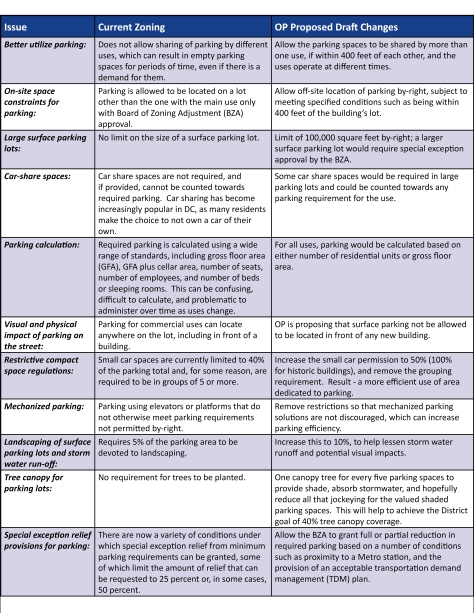What do Boulder, Chicago, Denver, Fort Collins, Miami, Milwaukee, Philadelphia, San Antonio, and St. Petersburg have in common with the District of Columbia? The answer is that these cities either recently completed, or substantially updated, their existing zoning codes. In addition to those cities, Baltimore is currently nearing the finish line for its major zoning rewrite, and Los Angeles has recently started to update its code. Is there a reason behind this seeming rash of new codes?
As is the case in the District, the previous zoning codes in these cities were decades old and unwieldy. Most of the codes were written in the years following World War II, when separating land uses was all the rage (in many cases, the encroachment of “noxious” uses into residential areas led to zoning restrictions which separated residential, commercial and manufacturing uses). In recent years, these old codes have proved to be ill-suited to the needs of evolving cities:
• The American economy has largely transitioned away from heavy manufacturing, removing many of the noxious uses from many cities.
• Mixed-use zoning is increasingly prevalent in American cities and many residents want to live near where they work and shop.
• Attitudes toward the private automobile are changing. The lynch-pin of many existing zoning codes was the supremacy of the private automobile, and zoning regulations (much like Federal and local transportation and land use policies in general) reinforced the notion that everyone should aspire to suburban living, which required an automobile to meet even the most basic of needs. Now, many people prefer to live a car-free or car-light lifestyle because there are a wider variety of transportation options, to be more environmental friendly, or just to save the expense and bother of car-ownership.
• Finally, there is the changing demographics of the country, with more retirees and recent graduates seeking to live in walkable communities built as mixed use developments that would have been frowned on by the old codes.
In revamping their codes, these jurisdictions used somewhat differing approaches specifically suited to each place — from conventional use-based zoning to form-based codes that replace use districting with design controls. However, the common link is that these cities sought to replace unclear and antiquated codes with streamlined versions which better allow for mixed-use, pedestrian-friendly, and transit-oriented development.
A few of the most recently developed codes, including those created by Philadelphia, Baltimore, and Miami, merit a closer look. Over the next few days, we are going to post a summary of each. First up in this series – Philly!


